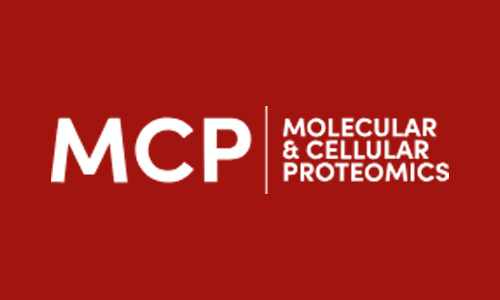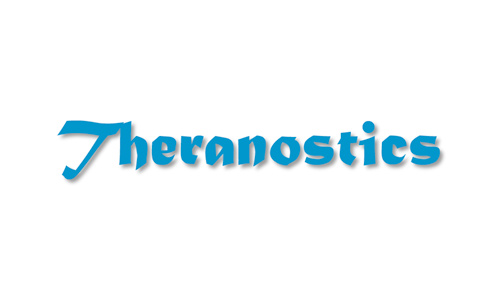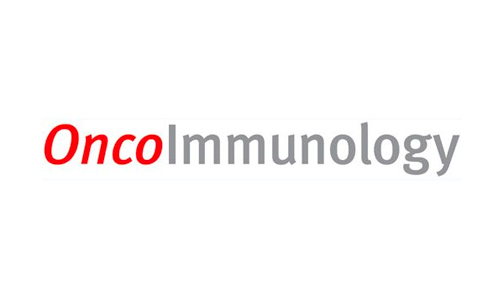- Follow Us
Publications
High-profile publications featuring CDI Labs products and services
274 Total Publications
Refine Your Search
Publication Details
- Date
- Link
- + Abstract

New Biotechnology - Elsevier
- Main Product: HuProt
- HuProt: Proper definition of the set of autoantibody-targeted antigens relies on appropriate reference group selection
- Christian P. Moritz, Oda Stoevesandt, Yannick Tholance, Jean-Philippe Camdessanché, Jean-Christophe Antoine
- Synaptopathies and Autoantibodies, Faculty of Medicine Jacques Lisfranc, University Jean Monnet
Autoimmune diseases are frequently associated with autoantibodies. Recently, large sets of autoantibody-targeted antigens (“autoantigen-omes”) of patient and control sera have been revealed, enabling autoantigen-omic approaches. However, statistical standards for defining such autoantigen-omes are lacking. The z-score indicates how many standard deviations an antigen reactivity of a given sample is from the mean reactivity of the corresponding antigen in a reference group. Hence, it is a common measure to define significantly positive reactivity in autoantigen profiling approaches.

ATVS
- Main Product: HuProt
- HuProt: E17241 as a Novel ABCA1 (ATP-Binding Cassette Transporter A1) Upregulator Ameliorates Atherosclerosis in Mice
- Yanni Xu, Shuyi Si, et. al.
- Laboratory of Biotechnology of Antibiotics, National Center for New Microbial Drug Screening, Institute of Medicinal Biotechnology
HuProt Small Molecule: Reverse cholesterol transport, removing excess cholesterol from peripheral tissues, is an important therapeutic target for atherosclerosis treatment. In this study, we propose a new small molecule, E17241, that may be used to treat atherosclerosis by promoting reverse cholesterol transport via ABCA1 (ATP-binding cassette transporter A1) upregulation.

Frontiers in Medicine
- Main Product: HuProt
- HuProt: Renal Expression of Light Chain Binding Proteins
- Thomas Reiter, Wolfgang Winnicki, et. al.
- Dept of Medicine III, Division of Nephrology and Dialysis, Medical University of Vienna
HuProt PPI: Overproduction of human light chains (LCs) and immunoglobulins can result in various forms of renal disease such as cast nephropathy, monoclonal immunoglobulin deposition disease, LC proximal tubulopathy, AL amyloidosis, and crystal storing histiocytosis. This is caused by cellular uptake of LCs and overwhelmed intracellular transport and degradation in patients with high urine LC concentrations. LC kappa and lambda purification was evaluated by sodium dodecyl sulfate gel electrophoresis. LC and myeloma protein binding to immobilized renal proteins was measured by enzyme-linked immunosorbent assay (ELISA).

Molecular & Cellular Proteomics
- Main Product: HuProt
- HuProt: Identification of Novel Serological Autoantibodies in Takayasu Arteritis Patients Using HuProt Arrays
- Xiaoting Wen, Yongzhe Li, et. al.
- Dept of Clinical Laboratory, Peking Union Medical College Hospital
HuProt Autoantibodies: To identify novel autoantibodies of Takayasu arteritis (TAK) using HuProt array-based approach, a two-phase approach was adopted. In Phase I, serum samples collected from 40 TAK patients, 15 autoimmune disease patients, and 20 healthy subjects were screened to identify TAK-specific autoantibodies using human protein (HuProt) arrays. In phase II, the identified candidate autoantibodies were validated with TAK-focused arrays using an additional cohort comprised of 109 TAK patients, 110 autoimmune disease patients, and 96 healthy subjects.

Journal of Clinical Immunology
- Main Product: HuProt
- HuProt: Serum Sp17 Autoantibody Serves as a Potential Specific Biomarker in Patients with SAPHO Syndrome
- Hongqin You, Guanglei Dang, Bichao Lu, Siya Zhang, Chen Li, Lun Wang, Yu Hu, Hui Chen, Jianmin Zhang & Wei He
- Dept of Immunology, Key Laboratory of T Cell Mediated Cancer Immunotherapy, Institute of Basic Medical Sciences
SAPHO (synovitis, acne, pustulosis, hyperostosis, and osteitis) syndrome shows a wide variability in musculoskeletal and cutaneous manifestations, and it is therefore underrecognized and misdiagnosed in the clinic due to a lack of specific markers. In this study, we aimed to identify specific biomarkers by screening serum autoantibodies in SAPHO patients with a 17K human whole-proteome microarray.

Methods - Elsevier
- Main Product: HuProt
- HuProt: Protein domain microarrays as a platform to decipher signaling pathways and the histone code
- Jianji Chen, Cari Sagum, Mark T Bedford
- Dept of Epigenetics and Molecular Carcinogenesis, The University of Texas MD Anderson Cancer Center,
HuProt Enzyme: Signal transduction is driven by protein interactions that are controlled by posttranslational modifications (PTM). Usually, protein domains are responsible for “reading” the PTM signal deposited on the interacting partners. Protein domain microarrays have been developed as a high throughput platform to facilitate the rapid identification of protein-protein interactions, and this approach has become broadly used in biomedical research.

Cell
- Main Product: HuProt
- HuProt: Mapping Systemic Inflammation and Antibody Responses in Multisystem Inflammatory Syndrome in Children (MIS-C)
- Conor N. Gruber, Dusan Bogunovic, et. al.
- Precision Immunology Institute, Icahn School of Medicine at Mount Sinai
Initially, children were thought to be spared from disease caused by severe acute respiratory syndrome coronavirus 2 (SARS-CoV-2). However, a month into the epidemic, a novel multisystem inflammatory syndrome in children (MIS-C) emerged. Herein, we report on the immune profiles of nine MIS-C cases. All MIS-C patients had evidence of prior SARS-CoV-2 exposure, mounting an antibody response with intact neutralization capability. Cytokine profiling identified elevated signatures of inflammation (IL-18 and IL-6), lymphocytic and myeloid chemotaxis and activation (CCL3, CCL4, and CDCP1), and mucosal immune dysregulation (IL-17A, CCL20, and CCL28).

Nature - Communications Biology
- Main Product: HuProt
- HuProt: Focal adhesion ribonucleoprotein complex proteins are major humoral cancer antigens and targets in autoimmune diseases
- Shinichiro Atsumi, Hiroto Katoh, Daisuke Komura, Itaru Hashimoto, Genta Furuya, Hirotomo Koda, Hiroki Konishi, Ryohei...
- Dept of Preventive Medicine, Graduate School of Medicine, the University of Tokyo
Despite the accumulating evidences of the significance of humoral cancer immunity, its molecular mechanisms have largely remained elusive. Here we show that B-cell repertoire sequencing of 102 clinical gastric cancers and molecular biological analyses unexpectedly reveal that the major humoral cancer antigens are not case-specific neo-antigens but are rather commonly identified as ribonucleoproteins (RNPs) in the focal adhesion complex. These common antigens are shared as autoantigens with multiple autoimmune diseases, suggesting a direct molecular link between cancer- and auto-immunity on the focal adhesion RNP complex.

Theranostics
- Main Product: HuProt
- HuProt: Celastrol induces ROS-mediated apoptosis via directly targeting peroxiredoxin-2 in gastric cancer cells
- Xi Chen, Guang Liang, et. al.
- Chemical Biology Research Center, School of Pharmaceutical Science, Wenzhou Medical University
HuProt Small Molecule: Oxidative stress from elevated reactive oxygen species (ROS) has been reported to induce cell apoptosis and may provide a means to target cancer cells. Celastrol is a natural bioactive compound that was recently shown to increase ROS levels and cause apoptosis in cancer cells. However, the underlying mechanism for this cytotoxic action remains unclear and direct molecular targets of Celastrol have not been identified.

OncoImmunology
- Main Product: HuProt
- Tropomyosin autoantibodies associated with checkpoint inhibitor myositis
- Pauline Zaenker, David Prentice & Melanie Ziman
- School of Medical and Health Sciences, Edith Cowan University
HuProt Autoantibodies: This brief report details the measurement and identification of IgA antibodies to tropomyosin in a case of presumed ocular myositis with paraspinal myositis in a patient with metastatic uveal melanoma treated with checkpoint inhibitors. High-throughput functional protein microarray analysis and pathway analysis was conducted to identify IgG and IgA antibodies of interest. Antibody levels were compared to generic antibody screening results and levels of the antibodies in a cohort of melanoma patients without myositis (n = 100) at baseline prior to undergoing immunotherapy. The finding of specific muscle antibodies in this clinical case indicates the pathogenic potential of anti-tropomyosin IgA in the development of checkpoint inhibitor associated myositis.